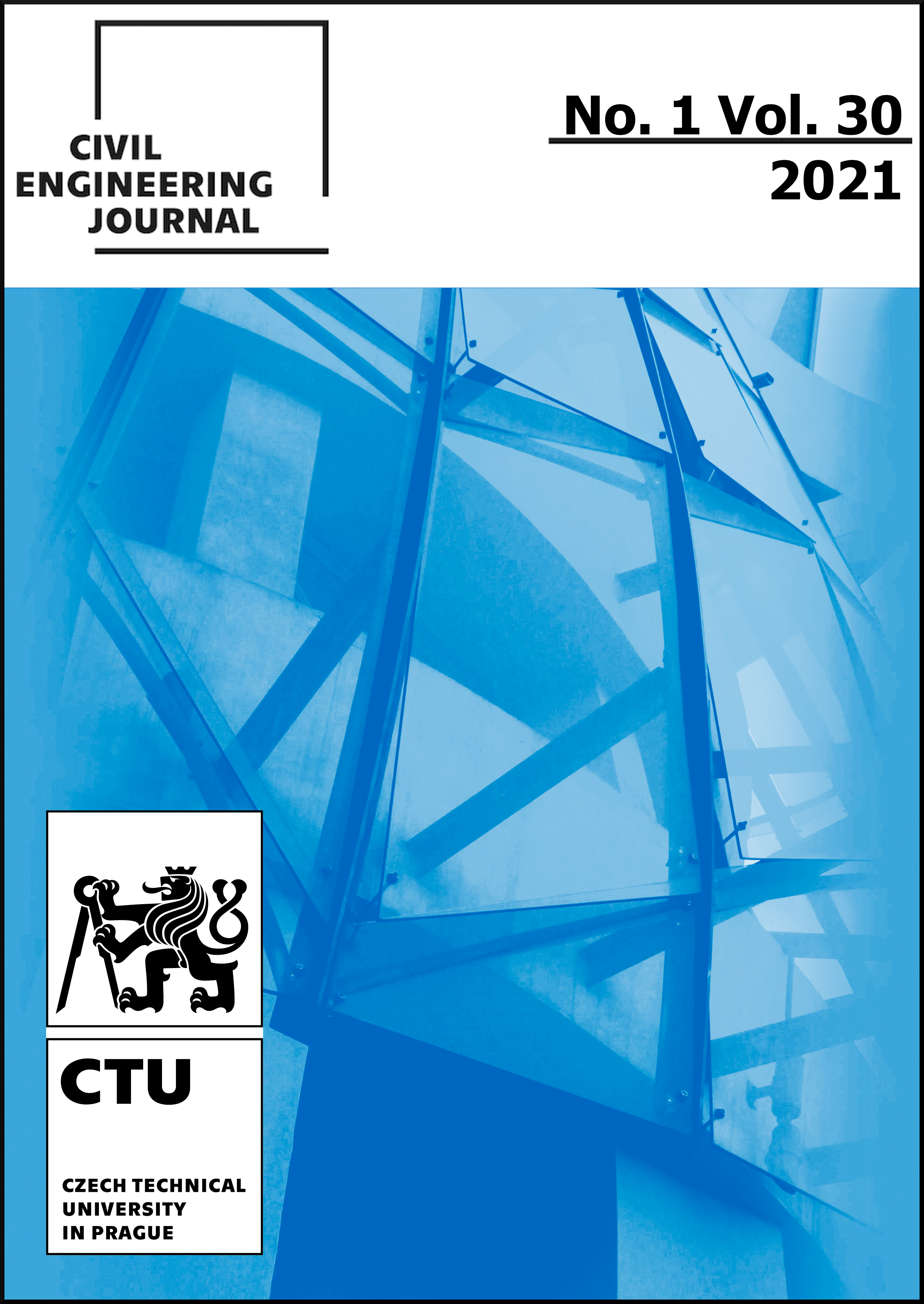THEORETICAL SOLUTION OF PILING COMPACTION AND THE INFLUENCE OF PILE-SOIL-BOUNDARY CURVE HYPOTHESIS
DOI:
https://doi.org/10.14311/CEJ.2021.01.0020Keywords:
Theoretical solution, Piling compaction, Boundary curve hypothesis, Variational method, Integral functionAbstract
Research is ongoing to find theoretical solution to three-dimensional piling compaction. Considering the spacial-axis-symmetric characteristics, the boundary surface of pile-soil interaction is expressed by polynomials of different orders. First, the curve family parameter is introduced to construct the displacement and integral function. Then, the solution of pile-soil interaction is derived by combining the constitutive relation model of Duncan-Chang and the variational theory. Results of engineering computing show that the theoretical solution converges to the classical CEM and the limit equilibrium theory well at the corresponding computing area. Moreover, the effects of polynomial of different orders on the calculation results are not obvious. The conclusion in this paper can be used for reference in the derivation and application for other interaction of structure and soil problems.
Downloads
References
Sagaseta. Analysis of undrained soil deformation due to ground loss[J]. Geotechnique,1987, 37(3): 301-320
Sagaseta. Prediction of Ground Movements Due to Pile- Driving in Clay [J]. Journal of Geotechnical and Geoenvironmental Engineering. 2001, 127(1): 55-66.
Luo Zhanyou. Study on compacting effects and construction measures of jacked pile [D]. Hangzhou: Zhejiang University, 2004. 19-21 ( in Chinese)
Wang Pengcheng. Study on Cavities Expansion in Soils with Softening and Dilation and Analysis of Pile Driving Effects [D]. Hangzhou: Zhejiang Univ. 2005. 175-177 ( in Chinese)
Zhu Ning. Theoretical Analysis of Soil Deformation Due to Pile Jacking [D]. Nanjing: Hohai Univ., 2005. 131-132. ( in Chinese)
Niu Yangjun. Modernistic Variation Principle[M]. Beijing: Press of Beijing University of Technology, 1992 (in Chinese)
Wang Xucheng, Shao Min. Numerical method and basic theory of finite element method [M]. Beijing: Tsinghua University Press, 1997.
QIAN J H, YIN Z Z. Principle and calculation of geotechnical engineering[M].2nd ed. Beijing: China Water & Power Press,1996(in Chinese).
ZHENG Ying-ren, SHEN Zhu-jiang, GONG Xiao-nan. The principles of geotechnical plastic mechanics[M]. Beijing: China Architecture and Building Press, 2002: 180-183. (in Chinese))
GAO Zi-kun. Theoretical Analysis of Soil Squeezing Effect and Conslidation Characteristic Due to Pile Jacked [D]. Nanjing: Hohai Univ., 2007. 57-66. ( in Chinese)
Xu Zhi-lun. Elastic mechanics[M]. 3rd ed. Beijing: Higher Education Press, 1984: 274-278. ( in Chinese))
Carter, J.P., Randolph, M.F. and Wroth, C.P. (1979). Stress and pore pressure changes in clay during and after the expansion of cylindrical cavity. Int. J. for Num. and Analy. in Geomech. Vol.3, 1979.
RANDOLPH M F, CARTER J P, WROTH C P. Driven piles in clay - the effects of installation and subsequent consolidation[J]. Géotechnique, 1979, 29(4): 361-393.
Visic, A. C., Expansion of Cavity in Infinite Soil Mass, Jour. Soil Mech. Found. Div., A. S. C. E., 1972, 98(3), 265-289.
Atkinson, J. H. and Bransby P. L. The Mechanics of Soils[M].McGraw-Hill, England, 1978.
TANG Shi-dong, LI Yang. Analysis of a driven pile by ANSYS. Rock And Soil Mechanics [J]. Vol. 27,2006: 973~976.
Chen Xizhe. Soil mechanics and foundation [M]. Beijing: Tsinghua Press. 2004.
Jin-Hung Hwang, Neng Liang and Cheng-Hsing Chen. Ground Respond During Pile Driving. Journal of Geotechnical and Geoenvironmental Engineering. Nov., 2001: 939~948.
Downloads
Published
Issue
Section
License
Copyright (c) 2021 Author

This work is licensed under a Creative Commons Attribution-NonCommercial 4.0 International License.
Authors who publish with this journal agree to the following terms:
- Authors retain copyright and grant the journal right of first publication with the work simultaneously licensed under a Creative Commons Attribution License that allows others to share the work with an acknowledgement of the work's authorship and initial publication in this journal.
- Authors are able to enter into separate, additional contractual arrangements for the non-exclusive distribution of the journal's published version of the work (e.g., post it to an institutional repository or publish it in a book), with an acknowledgement of its initial publication in this journal.
- Authors are permitted and encouraged to post their work online (e.g., in institutional repositories or on their website) prior to and during the submission process, as it can lead to productive exchanges, as well as earlier and greater citation of published work (See The Effect of Open Access).











